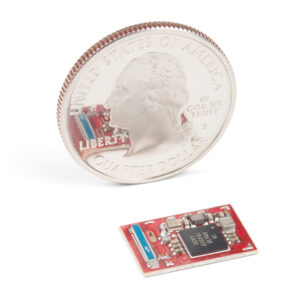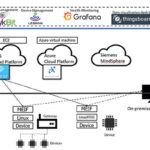 SparkFun Electronics’ SparkX division, led by founder Nathan Seidle, has released the company’s first open-source, embedded-systems module — SparkFun Artemis, Engineering Version — to empower engineers, prototypers, and R&D teams to integrate the TensorFlow machine-learning platform into any design. Additionally, the team has launched three boards with the unshielded module: BlackBoard Artemis; BlackBoard Artemis Nano; and BlackBoard Artemis ATP.
SparkFun Electronics’ SparkX division, led by founder Nathan Seidle, has released the company’s first open-source, embedded-systems module — SparkFun Artemis, Engineering Version — to empower engineers, prototypers, and R&D teams to integrate the TensorFlow machine-learning platform into any design. Additionally, the team has launched three boards with the unshielded module: BlackBoard Artemis; BlackBoard Artemis Nano; and BlackBoard Artemis ATP.
“Our goal is to enable anyone to integrate low-power machine learning into their designs and projects without being locked into a specific toolchain,” said SparkFun founder and engineer, Nathan Seidle, “The Artemis module is the first product to bridge the gap between hobbyists and consumer products, providing a single module from prototype to production.”
Beyond its small size (15.5 x 10.5mm including antenna), key features of the ultra-low-power Artemis module include:
- Cortex-M4F based BLE module using the Apollo3 microcontroller from Ambiq
- Advanced HAL (hardware abstraction layer) allowing users to push the modern Cortex-M4F architecture
- Capability of running machine learning algorithms with the low current consumption of 6μA/MHz at 3.3V
- Integrated Bluetooth 5 low-energy radio and 2.4GHz antenna
- All necessary circuitry for easy integration—large SMD pads and spacing allow for low-cost 2-layer carrier board implementations; programming over pre-configured serial bootloader or JTAG
- ISO7816 Secure ‘Smart Card’ interface
- Secure firmware update system
- Flexible serial peripherals
- Rich set of clock sources
- Camera capable
The three carrier boards provide fairly familiar form factors and enable anyone to flex the capabilities of Artemis module. All three boards:
- Have a digital MEMS microphone for experimenting with always-on voice commands with TensorFlow and machine learning
- Have built-in BLE radio
- Are fully compatible with SparkFun’s Arduino core and can be programmed easily under the Arduino IDE (SparkFun wrote the core from scratch)
- Have an exposed JTAG connector for more advanced users who prefer to use the power, flexibility, and speed of professional tools
- Include Qwiic® connectors for easy prototyping and daisy-chain capabilities for the Qwiic ecosystem, which includes 70+ sensors, outputs, and controllers
The SparkFun BlackBoard Artemis comes in the Uno footprint and is a good entry point for working with the Artemis module; the BlackBoard Artemis Nano is the smallest form factor of the three boards and offers great flexibility for smaller projects; and the Blackboard Artemis ATP (“all the pins”) breaks out all 48 GPIO of the module and allows users to leverage the full capabilities of the module.
SparkFun is currently seeking FCC/CE approval for the Artemis module, which will be released as shielded modules and will be available in tape-and-reel quantities. The Engineering Version released today, allows users to get started as soon as possible.


Leave a Reply